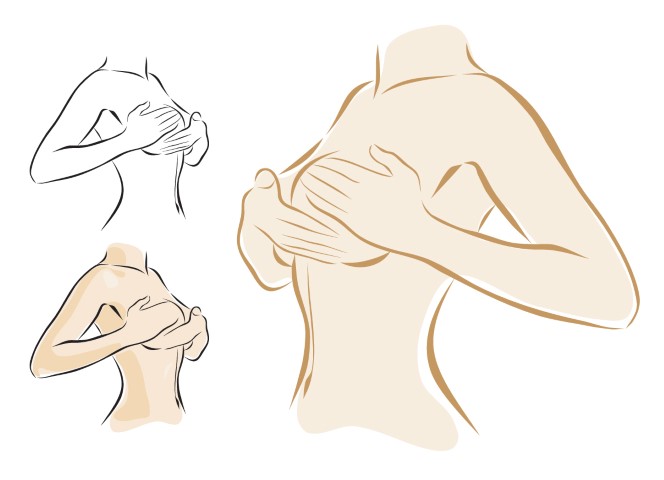Breast self-exams can be a critical tool for early detection of breast cancer. A monthly self-exam is a screening technique women can do at home to help screen for lumps, tumors, cysts, or other abnormalities that can occur in a woman’s breasts. While there has been some debate over the years about the value of self-exams in detecting breast cancer, we consider them to be an essential screening tool, especially when combined with regular annual breast cancer screenings. We have answered some questions about self-exams to help patients become more familiar with this important practice.
If my breasts appear to be different sizes during my self-exam, is this a sign of breast cancer?
Breast asymmetry is actually quite common and not necessarily anything to be concerned about. If the larger of your 2 breasts feels more prominent, this may just be due to there being more breast tissue on that side. Get to know the size and shape of your breasts intimately so you can tell if a new growth or irregularity pops up.
When is the best time to perform a breast self-exam?
We recommend waiting a few days after you have completed your monthly menstrual cycle to do a breast self-exam. Hormonal changes that occur during menstruation can affect the size and feel of your breasts, and it is always best to perform the exam when your breasts are in their normal state. Women who do not menstruate (due to menopause, hysterectomy, etc.) should choose a certain day of the month to perform their exams to keep from forgetting. Keeping a running journal of your self-exams can be a great way to track and record any changes in your breasts that may occur.
Can breast self-exams take the place of mammograms or breast cancer screenings?
Definitely not. While breast self-exams can be a great way to get to better know your breasts and spot potential abnormalities that occur between breast cancer screening appointments, mammograms are still a far more effective method of scanning for potential issues. Mammograms can look under the skin and notice tumors before they are noticeable to the naked eye.
If you notice anything strange or different during your breast self-exam, contact your healthcare provider. The vast majority of lumps found during self-exams are not cancerous, but it’s always better to be safe than sorry when thinking about breast cancer. For more information on women’s health & wellness, please contact Gynecology Associates of Gwinnett today. You can also follow us on Facebook, Twitter, and Google+ for more tips and updates on our upcoming Health & Wellness events.


